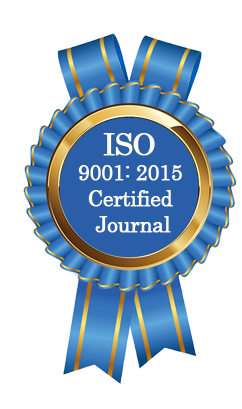| All | Since 2020 | |
| Citation | 105 | 60 |
| h-index | 4 | 4 |
| i10-index | 3 | 2 |
WJAHR Citation 
Login
News & Updation
Best Article Awards
World Journal of Advance Healthcare Research (WJAHR) is giving Best Article Award in every Issue for Best Article and Issue Certificate of Appreciation to the Authors to promote research activity of scholar.
Best Article of current issue
Download Article : Click here
Indexing
Abstract
RISK FACTORS FOR PEPTIC ULCER AMONG PATIENTS UNDERGOING UPPER GASTROINTESTINAL TRACT ENDOSCOPY AT AL SALAM TEACHING HOSPITAL IN MOSUL, IRAQ
Samid Qais Mahmood* and Emad Ali Mohammed
ABSTRACT
Background: The stomach or the first and second sections of the duodenum are the most common locations for peptic ulcers, which are erosions brought on by discontinuation or disruption in the inner lining of the gastrointestinal tract (GIT) as a result of hyperacidity. The commonest risk factors of peptic ulceration are Helicobacter pylori infection, nonsteroidal anti-inflammatory drug (NSAID), oral steroid use, and tobacco consumption. Objectives: Is to assess the risk factors for having peptic ulcer among patients undergoing upper GIT endoscopy at Al Salam Teaching Hospital in Mosul City. Methods: The study is case control study done at endoscopy unit- Al Salam Teaching Hospital in Mosul, Iraq from the 1st of July 2023 to the end of December 2024. The questionnaire includes three parts, part one for sociodemographic information, part two for anthropometric measures and part three for various risk factors for peptic ulcer disease. Results: The study includes 300 patients, of them 100 patients with peptic ulcer (cases) and 200 patients with normal OGD findings (controls). Among patients 87 (87%) patients had duodenal ulcer while 13 (13%) patients had gastric ulcer. The mean age of the study participants was 46.64 ± 28.32 years. It was evident that male gender, active smoking, NSAIDs and steroid drugs intake, the presence of previous peptic ulcer or having positive family history, positive H. pylori infection, coffee consumption and spicy food and lastly; extreme stressful life event were founded to be risky for peptic ulcer disease. Conclusion: The inflammatory and ulcerative processes are complex and impacted by both genetic predisposition and environmental variables. There may be variation in the risk factors linked to peptic ulcer disease. To fully examine how many factors contribute to the development of peptic ulcer disease, more researches are necessary.
[Full Text Article] [Download Certificate]
